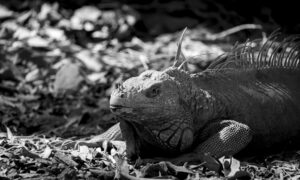The Early Life of Rosalind Franklin
Rosalind Franklin was born in London during the 1920s into a well-respected Jewish family. Her natural curiosity and exceptional talent for mathematics were evident from a young age. Recognizing her potential, her family supported her educational journey, enrolling her in some of the best schools to ensure she received the education she desired.
Academic Excellence and a Love for Science
After completing her school education, Rosalind pursued science at the University of Cambridge. She focused on crystallography and physical chemistry, graduating at the top of her class. Despite her academic brilliance and strong work ethic, she faced significant gender-based discrimination—common in most universities at that time. Still, she remained ambitious and driven, earning her PhD in 1945 with a thesis centered on the chemical and structural properties of coal.
Professional Growth in Paris
Following her doctorate, Rosalind accepted a position in a laboratory in Paris, where she excelled in the field of X-ray crystallography. Her detailed, systematic research earned her considerable respect in scientific circles. During her time in France, she refined her experimental techniques and established a reputation for producing exceptionally clear crystallographic images.
The Move to King’s College London
In 1950, Rosalind Franklin was offered a three-year fellowship at the Biophysics Unit of King’s College London. She was assigned to determine the structure of DNA using X-ray crystallography—a task that promised to be a major scientific breakthrough. At that time, scientists had identified the chemical components of DNA, but its three-dimensional structure remained unknown.
Conflict and Rivalry in the Lab
Rosalind’s colleagues at King’s, Maurice Wilkins and Raymond Gosling, were also working on the structure of DNA. However, miscommunication and weak leadership in the lab led to competition and interpersonal tension. Rosalind, working in a male-dominated environment, often felt unwelcome.
Meanwhile, at the University of Cambridge, scientists James Watson and Francis Crick were also racing to determine the DNA structure. They received substantial support and had access to a wide network of mentors and collaborators.
Photo 51 – The Breakthrough Image
Through her experimental precision, Rosalind and her assistant, Raymond Gosling, succeeded in capturing a groundbreaking high-resolution X-ray diffraction image of DNA—Photo 51. This image provided critical evidence for the helical structure of DNA.
After Rosalind left King’s College for a new position, Wilkins shared Photo 51 with Watson and Crick without her knowledge or consent. Using her data, they constructed a DNA model and published their findings in Nature in 1953. Rosalind’s contribution was only acknowledged in a brief footnote.
Continued Scientific Contributions
Despite the controversy, Rosalind focused on her own research. She made significant contributions to the study of viruses and RNA. Her career was gaining momentum when, in 1956, she was diagnosed with ovarian cancer. Sadly, she passed away in April 1958 at the age of just 37.
Recognition Denied
In 1962, Watson, Crick, and Wilkins were awarded the Nobel Prize for their work on DNA. Rosalind was not recognized, in part because the Nobel is not awarded posthumously, but also due to systemic gender bias. Watson, in particular, downplayed her role in interviews and his bestselling book, which included sexist and misleading portrayals of her personality and work.
Defending Rosalind’s Legacy
Many of Rosalind’s colleagues later defended her legacy, including Nobel laureate Aaron Klug. He praised her contributions in his acceptance speech and uncovered her notes and unpublished papers, which showed that she had come close to solving the DNA structure on her own.
A Feminist Icon in Science
Today, Rosalind Franklin is seen as a symbol of the struggles faced by women in science and a feminist icon. Her story highlights the importance of equity and recognition in scientific research. Though progress has been made, her life remains a powerful reminder that more must be done to ensure equal opportunities and acknowledgment for all scientists, regardless of gender.






